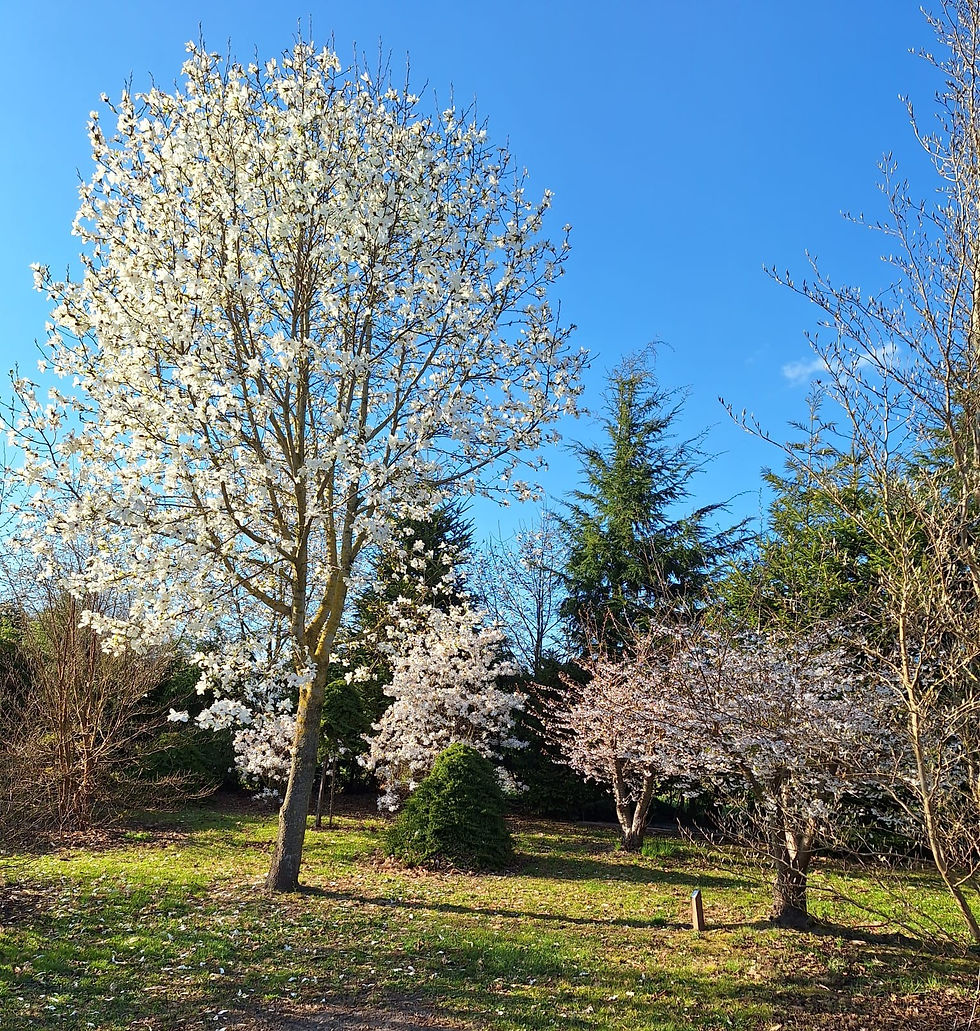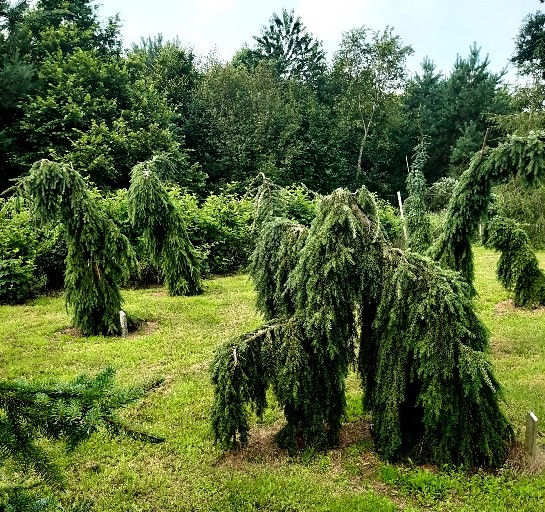

Meaning & Philosophy
Evolution, Energy and Deep Time
Darwinism and thermodynamics were important to Oudemans because they reveal something about the relationship between humans and nature. The arboretum illustrates something of that relationship.




Biodiversity
At the Tenaxx Estate, non-native trees from all over the world who wish to grow here are warmly welcomed. Many of these trees grew in our region before the Ice Ages. Examples include the Sequoia, Metasequoia, Cathaya, Ginkgo, Zelkova, Liquidambar, Taxodium, Pterocarya, Cercidiphyllum, and Magnolia.
Natural variation
Carl Linnaeus laid the foundation for the classification of the plant kingdom as it remains in use today. He was convinced that species were immutable and could be distinguished from one another by fixed characteristics. Alfred Russel Wallace and Charles Darwin changed this. They realized that natural species are not fixed but change as they adapt to their environment, ultimately giving rise to new species.
The combination of native species and weeping forms in the Hanging Gardens of the Tenaxx Estate gives a glimpse into the diversity of nature. They demonstrate that the variation within a species is sometimes so great that different specimens are no longer recognizable as belonging to the same species. This insight is evident in the Hanging Gardens. For example, the Hanging Gardens feature 60 Juniperus and 46 Abies species. In Europe, the 45 Picea abies species, with their often bizarre shapes, offer a breathtaking display of the variation within the species, and in America, the wide variety of Chamaecyparis lawsoniana species is a striking example. They are found in every conceivable shape and color.




Natural selection
Within a species, there is variation between individuals. Trees adapt to changes in their environment. The best-adapted varieties survive, while less adapted varieties die out—the downside of evolution. This is also the case in Arboretum Tenaxx, where the Abies fraseri was felled by disease after 10 years. The Hanging Gardens offer insight into how species survive.




Nature and culture
People and trees are captivated by each other. Trees seduce people, and people seduce trees. For example, the Metasequoia occurred throughout the Northern Hemisphere, including Northern Europe, during the Jurassic and Cretaceous periods, but later almost entirely disappeared. So much so, in fact, that it was thought extinct until it was discovered in a valley in China in 1940. The Metasequoia then seduced humans to spread its seeds around the world. The same applies to weeping trees. They seduce people with their beauty and are subsequently cherished and spread.
Thermodynamics
Besides Darwinism, thermodynamics represents a fundamental shift in the way nature, things, and even humans appear. It demonstrates that living organisms are subject to a changing energetic interplay. Everything loses its degree of organization over time, and simultaneously, new forms of organization emerge, in unpredictable and uncontrollable ways. Only through a continuous supply of energy can they postpone their demise. This postponement is called life. Living organisms prevent temporary energy loss by being surrounded by membranes.
Trees do too. They use the energy of sunlight to transform CO2 and water into oxygen and sugar (photosynthesis), which is stored as starch, another form of energy.
The trees in the arboretum demonstrate in various ways how they intelligently harness the sun's energy. The araucaria, a highly successful tree dating back to the Jurassic period, has arranged its leaves according to the Fibonacci principle, in a striking whorl that maximizes sunlight absorption. This is also true for the leaves of most deciduous trees. With their enormous canopy, they are able to temporarily delay their demise using the sun's energy.



Deep time



The Hanging Gardens feature several tree species over a hundred million years old, some dating back to the age of the dinosaurs. Replicas of (dino)saurs stand among the trees. Trees and dinosaurs evolved together. The herbivorous dinosaurs had to subsist on scarce and hard-to-digest plants and trees. Their jaws, necks, and digestive tracts adapted accordingly. Conversely, the trees defended themselves against the dinosaurs' predation. They developed venom, spines, and inedible bark, and took to the air, just like their competitors. Some of these trees are still alive; the land-dwelling dinosaurs are not. They confront us with the reality of finitude.
Mirror of nature and people
The Hanging Gardens reflect the interplay of Mother Nature, which humans cannot control because they are part of it. The gardens provide space for the playful and monstrous variety of trees, all of which originated in nature. The tranquility of the garden can evoke an experience of beauty that prompts reflection on the ambivalent relationship between culture and nature. With the arboretum, Oudemans aimed to showcase Mother Nature's interplay. A walk past the remarkable trees of the Hanging Gardens offers an opportunity to pause for a moment and reflect on the grand and capricious nature itself, of which humanity is an outgrowth, not the master, as Oudemans puts it in his book "The Hanging Gardens of the Tenaxx Estate Gardens."
